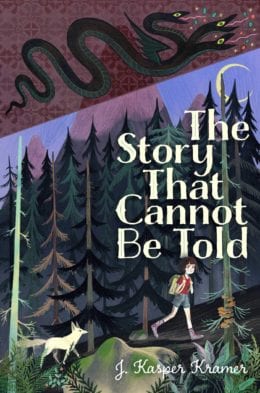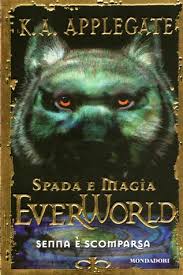 Today I welcome J. Kasper Kramer to Best Dog Books and World Reads, a blog that features interviews with authors who’ve written a canine story for kids or young adults set overseas. The Story That Cannot Be Told, middle grade historical fiction, was published on October 8, 2019 by Simon & Schuster / Atheneum. The awesome cover art is by Isabella Mazzanti.
Today I welcome J. Kasper Kramer to Best Dog Books and World Reads, a blog that features interviews with authors who’ve written a canine story for kids or young adults set overseas. The Story That Cannot Be Told, middle grade historical fiction, was published on October 8, 2019 by Simon & Schuster / Atheneum. The awesome cover art is by Isabella Mazzanti.
I just finished reading an advanced reader copy of THE STORY THAT CANNOT BE TOLD. I spent 1989 in Russia when the world was changing because of steps Gorbachev took. I recall meeting people who had escaped Romania around that time and learning about Romania’s leader. It still shocks me to think that a leader could treat his people the way he did that’s why I was interested in reading Kramer’s book for a deeper dive into the culture, the folklore, and the history through the eyes of a young girl. I was hooked from the first chapter and admired how the author wove so many story threads to create this story that reads like no other story I have ever read. If you like being transported to other places from the point of view of a strong girl character, if you like folklore and adventure, if you like historical fiction and intrigue, if you like good stories, this one is for you.
Who is your key dog character(s) and what kind of dog is he/she? Tell us a little more about him/her.
The White Wolf is a character from legends and folklore in Romania. He’s an important symbol in the Carpathian Mountains, where the wolf population is very dense, compared to other parts of Europe.
In my novel, the protagonist, Ileana, hears stories about the White Wolf, including a story about her mother meeting the wolf when she was a child. Ileana then begins dreaming about wolves and hearing them in the forest surrounding her grandparents’ mountain village. I won’t give away too much, but at the end of the book, the White Wolf and his story play an important part!
 Where is your story set? What is your story about?
Where is your story set? What is your story about?
The Story That Cannot Be Told is set in 1989 Communist Romania. It takes place in Bucharest, the capital city, then moves to a small village in the Carpathian Mountains.
The novel is about young Ileana, who desperately wants to be a writer. After writing anti-Communist poetry, her uncle disappears, though, and Ileana’s parents send her into hiding. However, danger is never far away. To save the people she loves, Ileana must find her voice and the strength to use it.
The Story That Cannot Be Told has gotten some great reviews, including a starred reviews from Publishers Weekly, School Library Journal, and Kirkus. Other great reviews include:
“By turns surprising, poetic, and stark, The Story That Cannot Be Told is one that should most certainly be read.”—Alan Gratz, New York Times bestselling author of Refugee
“Stories have immense power to change lives. J. Kasper Kramer’s beautiful novel is proof of that. A compelling story of a history that should never be forgotten.”—New York Times bestselling author Jennifer A. Nielsen
What inspired you to write this story?
While living in Japan, where I taught at an international school, some of my very best friends were Romanian women. They told me folklore and fairy tales, as well as stories about their lives back home, and that helped me come up with the basic concept for my novel.
How are you connected to your setting?
I have some Central/Eastern European ancestors—primarily Poland and Lithuania—so I’ve always been interested in that part of the world. I began researching Romania and its fascinating history when I became friends with Romanian expatriates while living in Japan, and things took off from there.
What was the biggest challenge you had writing your story? How did you overcome it?
The research was a lot of work! And unfortunately, there aren’t as many texts available in English about Romania as you might expect, especially when it comes to studying things like folklore. I was lucky, because my friends were a constant source of support. They read drafts of my book to help me spot authenticity errors and even translated documents from time to time.
 What kind of story can we expect next from you? Is it about a dog? If so, what is it about?
What kind of story can we expect next from you? Is it about a dog? If so, what is it about?
My next book was just announced! It’s titled The List of Unspeakable Fears and is forthcoming Fall 2021 from S&S/Atheneum! It’s a historical ghost story set in 1910 on North Brother Island—a quarantine island for the incurable sick of New York City.
A mangy, very old cat actually plays the most important animal role in my next book, but there’s a dog character, too. He belongs to Typhoid Mary, an important historical figure. (Most people don’t know that she was a dog lover!) Essie, the main character, is afraid of Mary’s dog, but don’t read too much into that—Essie’s afraid of the cat, too. In fact, she’s afraid of basically everything!
What else would you like us to know about you or your story?
One of my favorite things about The Story That Cannot Be Told is that it isn’t just historical fiction. Throughout the book are chapters of retold Romanian folklore and fairy tales that were SO much fun to write. If you look closely, you might see how the real Ileana’s world and the Princess Ileana’s world begin to overlap in the novel!
 Can you remember the first book that made an impact on you? And why?
Can you remember the first book that made an impact on you? And why?
I wanted to be a writer my whole life. I even remember telling my kindergarten teacher about it! And my parents read to me all the time. So there are surely dozens of books—as well as oral stories—that inspired me before I learned how to read on my own.
However, I think the first books that helped me figure out what I wanted to write—what kind of author I wanted to be—I read in middle school. I had always been a big reader, but I fell in love so deeply with the Extreme Zone series by M.C. Sumner and the Everworld series by K.A. Applegate that I remember not wanting to go on a family vacation because I was so sure that the next book in one of the series would show up from InterLibrary Loan while we were gone! (Thankfully, it arrived before we left and I spent the whole trip reading.)
 It might be hard to see how those books connect to the historical fiction I write today, but fantasy, sci-fi, and horror have always been my favorite genres, and I work hard to incorporate them (subtly, if not overtly) in all my work. More than anything else, though, I think those books gave me a goal. I wanted to write stories that people loved reading so much they’d lament having to go on vacation if it kept them from reading!
It might be hard to see how those books connect to the historical fiction I write today, but fantasy, sci-fi, and horror have always been my favorite genres, and I work hard to incorporate them (subtly, if not overtly) in all my work. More than anything else, though, I think those books gave me a goal. I wanted to write stories that people loved reading so much they’d lament having to go on vacation if it kept them from reading!
What advice would you give to aspiring writers?
I suppose, my advice is to take all advice with a grain of salt! You have to do things the way that they work for you. A lot of the advice I heard over the years about writing and publishing turned out not to be true for me. Now that I have a book on the shelf, I feel safe admitting that, but life would have been easier if I’d felt like it was okay to be different earlier on.
 For instance, a lot of authors and craft books talk about the importance of getting up and writing first thing every morning. For me, though, that’s basically an exercise in staring blankly at my computer screen, even if I slept for 10 hours the night before and have had a full pot of coffee! I get my best work done between 6pm-2am because that’s simply when I’m most focused and most creative. I’ve tried to push back on that fact for years, and only recently have instead shifted to accommodating the way I work best.
For instance, a lot of authors and craft books talk about the importance of getting up and writing first thing every morning. For me, though, that’s basically an exercise in staring blankly at my computer screen, even if I slept for 10 hours the night before and have had a full pot of coffee! I get my best work done between 6pm-2am because that’s simply when I’m most focused and most creative. I’ve tried to push back on that fact for years, and only recently have instead shifted to accommodating the way I work best.
To learn more about J. Kasper Kramer, check out her website and follow her on Twitter, Instagram, Facebook. To buy her book, you can find it on Amazon and wherever books are sold.
Thank you J. Kasper Kramer for joining us on Best Dog Books and World Reads!
For other great books about dogs, check out 101 Best Dog Books for Kids.
For published authors and unpublished authors, check out our writing contests.


